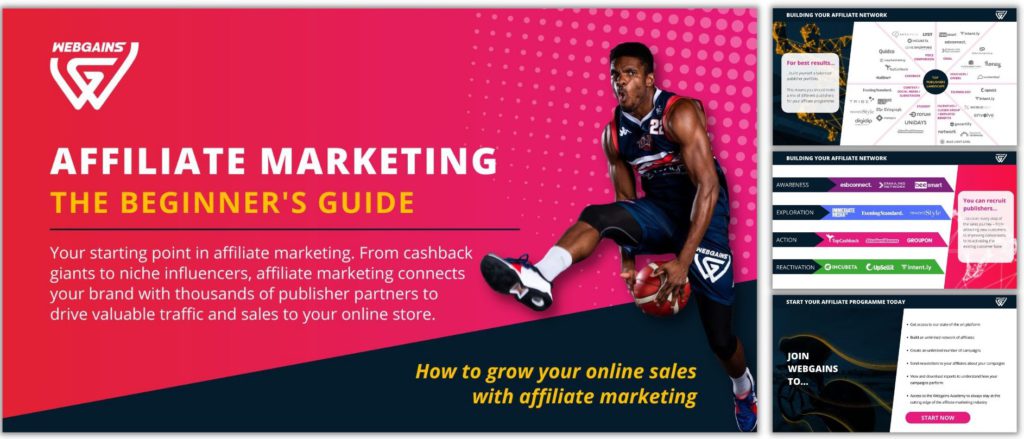Affiliate marketing has become a popular way for businesses to increase their revenue and reach a wider audience. It’s a type of performance-based marketing where a business rewards affiliates for each customer they bring through their own marketing efforts.
Affiliate marketing can be a win-win situation for both the business and the affiliate as it allows the business to reach a wider audience while the affiliate, or publisher, earns a commission for each sale they refer.
If you’re new to affiliate marketing, it can seem overwhelming, but it’s actually quite simple. In this blog post, we’ll go over the basics of affiliate marketing and how you can get started as an affiliate or an advertiser.
What is affiliate marketing?
Affiliate marketing is a type of marketing where a brand (also referred to as advertisers) rewards affiliates (also referred to as publishers) for each customer they bring to the business through their own marketing efforts. The business provides the affiliate with a unique affiliate link or code that the affiliate can use in their own marketing.
When a customer clicks on the affiliate link or uses the affiliate code to make a purchase, the affiliate earns a commission from the sale.
Affiliate marketing is often used by businesses as a way to increase their reach and revenue, and by working with affiliates, businesses can reach a wider audience and generate more sales.
Affiliates, on the other hand, can earn money by promoting products or services they believe in and enjoy, as this passion is carried over to their marketing efforts to an already engaged audience.
How does affiliate marketing work?
The affiliate marketing process is relatively simple. Here are the basic steps to starting a affiliate programme:
Step 1: A brand creates an affiliate programme
The business sets up an affiliate programme through an affiliate network like us here at Webgains, which finds publishers to promote their products and services.
Step 2: The affiliate promotes the product or service.
The affiliate promotes the business’s product or service using the affiliate link or code provided by the business. The affiliate can promote the product or service through their blog, website, social media, and many other different marketing channels.
Step 3: The customer clicks on the affiliate link or uses the affiliate code.
The customer clicks on the affiliate link or uses the affiliate code to make a purchase on the business’s website.
Step 4: The brand, affiliate and the network earn a commission.
The business tracks the sale made through the affiliate link or code and pays the affiliate a commission for each sale they refer.
Who are the major players in affiliate marketing?
For any affiliate marketing campaigns to be effective, all parties involved must work towards a common goal: increasing conversions.
These parties include:
The Merchant
Commonly referred to as The Advertiser within the affiliate channel, this is the brand seeking additional revenue sources.
The Agency
Working on behalf of The Advertiser to run their affiliate channel. Advertisers have the option to manage it themselves without an agency, which most often they do.
The Affiliate Network
Working closely with The Merchant brand to identify suitable publishers for converting more sales.
The Publisher
The affiliate marketer responsible for promoting products to their audience and earning a portion of the final sale price.
The Consumer
Who purchases the products through the tracking links provided by The Publisher.
What are the different types of affiliate marketing?
There are many different models when it comes to affiliate marketing, each with its own advantages and disadvantages. Here are some of the most common types of affiliate marketing:
Pay-Per-Sale (PPS)
Pay-Per-Sale is the most common type of affiliate marketing. In this model, the affiliate earns a commission for each sale they refer to the business.
Pay-Per-Click (PPC)
Pay-Per-Click is a type of affiliate marketing where the affiliate earns a commission for each click they generate on the business’s website.
Pay-Per-Lead (PPL)
Pay-Per-Lead is a type of affiliate marketing where the affiliate earns a commission for each lead they generate for the business. A lead is typically a signup for a free trial or a newsletter subscription.
Two-Tier
In a two-tier affiliate program, the affiliate earns a commission not only for the sales they refer to, but also for the sales made by affiliates they refer to the program.
Multi-Tier
Multi-Tier affiliate marketing is similar to two-tier affiliate marketing, but it allows affiliates to earn commissions on sales made by affiliates referred by their referrals.

The benefits of affiliate marketing for businesses
There are many benefits of affiliate marketing for businesses. Here are some of the biggest:
Increased sales and revenue
Affiliate marketing can significantly increase sales and revenue for businesses.
By leveraging the network of affiliates through companies like us here at Webgains, businesses can reach a wider audience and target customers who may not have been reached through traditional marketing channels.
Affiliates promote products or services to their followers or website visitors, and when a sale is made, the affiliate earns a commission and the business generates revenue.
Cost-effective
Affiliate marketing is a cost-effective marketing strategy because businesses only pay affiliates when a sale is made.
This means that businesses do not have to spend money on advertising or marketing campaigns that may not result in a sale, and they don’t require large up front costs to set up either.
Additionally, the cost of managing an affiliate program is typically low, and we’re able to offer a variety of support to our clients to ensure they are able to effectively track their campaigns.
Increased brand exposure
Affiliate marketing can increase brand exposure for businesses. As affiliates promote the products or services to their followers, this can lead to increased visibility and brand recognition for very little investment.
Access to new customers
Affiliate marketing can help businesses reach new customers. Affiliates typically have their own audience or customer base, which means that businesses can tap into this network to reach this pool of engaged new customers.
Additionally, affiliates may promote products or services to their followers who may not have been aware of the business previously.
Performance-based
Affiliate marketing is a performance-based marketing strategy. This means that businesses only pay affiliates and their network when a sale is made or a specific action is taken, such as filling out a form or subscribing to a newsletter.
This ensures that businesses are only paying for results, which can help to maximise the return on investment of their marketing budget and give them an opportunity to scale as they please.
Builds partnerships and relationships
Affiliate marketing can help businesses build partnerships and relationships with customers.
By working closely with their network and affiliates, businesses can build trust and credibility, which can lead to long-term partnerships and collaborations. Additionally, affiliates may provide feedback on products or services, which can help businesses improve their offerings and customer experience.
Measurable results
Affiliate marketing provides businesses with measurable results. Businesses can track the performance of their affiliate program, including the number of clicks, leads, and sales generated.
This allows businesses to work closely with their network to analyse the performance of their program and make data-driven decisions to optimise and grow their programme.
Why choose Webgains?
At Webgains, we are committed to ensuring that our customers receive only the very best support and engagement through our network.
Our best-in-class expertise and cutting-edge technology are designed to ensure that our clients are performing at the top of their game.
No matter whether you’re an advertiser, publisher or you’re just beginning your journey through the Webgains Academy, our success is your success.
To get started on your affiliate marketing journey, download our Beginner’s Affiliate Guide, or get started on our free Introduction to Affiliate Marketing course.

If you liked this article, you might also be interested in our Affiliate A-Z series. Here we introduce the various publisher types and explain the pros and cons of working with each. Read them all here.

